Exhibition dates: 3rd February – 26th May 2019
Curator: Dr Raphaël Bouvier
Pablo Picasso (Spanish, 1881-1973)
Yo Picasso (I Picasso)
1901
Oil on canvas
73.5 x 60cm
Private collection
© Succession Picasso / 2018, ProLitteris, Zurich
Room 1
The young artist gazes defiantly over his shoulder at the viewer. His white shirt, painted with bold brushstrokes, glows against the dark background; in his right hand he holds a palette with traces of paint which, together with the lively orange and yellow in his cravat and face, create marked contrasts. The aspiring artist produced this self-portrait for his first exhibition at Ambroise Vollard’s gallery in Paris. Picasso painted himself here in a style reminiscent of Henri de Toulouse-Lautrec or Vincent van Gogh. The palette alone identifies the subject as an artist. The expressively applied colours, their brushstrokes clearly visible, carry significance: here the painter is not portrayed working, but through his work itself. The painting is a bold statement by the artist newly arrived in Paris – something that Picasso underscores with the inscription ‘Yo’ (Engl.: I) besides his signature in the upper left corner of the canvas. From this point on, he would sign his works simply ‘Picasso’ – his mother’s surname.
And now for something completely different…
My favourite periods of Picasso, probably because her tries to depict the feelings of the people he is portraying.
I love the paintings disrupted humanism, the monumental, twisted, isolated figures placed against a colourful, pictorially flattened, sometimes contextless ground. The spirit these paintings call forth – the intense gaze in the 1901 self-portrait; the sad introspection, depression of the Melancholy Women (1901); the existential themes of death, suffering and love in La Vie (Life) (1903) – show a 21 year old artist mature beyond his years, wizened in wisdom and understanding through the death of his sister and his friend Casagemas: “poverty, dejection, creative anguish, and grief for those lost.”
“In the most emotional, emotionally expressive pictures of this phase, the artist looks into the depths of human misery and relies on expressive topics such as life, love, sexuality and death.” The circus and acrobat paintings continue the theme of melancholy, disenchanted figures of the commedia dell’arte intertwined in the transformation of bodies in space (Henri Lefebvre).
Call me an old romantic, but the attitude and the touch of the emaciated blind man’s hand as he reaches for his flagon of wine totally does it for me in a way that the more brutish, primitivist paintings of his later raw style never can.
Dr Marcus Bunyan
Many thankx to the Fondation Beyeler for allowing me to publish the images in the posting. Please click on the images for a larger version of the art.
“I was a painter and became Picasso.”
“The Blue Period was not a question of light and colour. It was an inner necessity to paint like that.
Pablo Picasso
At the age of just twenty, the aspiring genius Picasso (1881-1973) was already engaged in a restless search for new themes and forms of expression, which he immediately brought to perfection. One artistic revolution followed another, in a rapid succession of changing styles and visual worlds. The exhibition at the Fondation Beyeler places the focus on the Blue and Rose periods (1901-1906), and thus on a central phase in Picasso’s work. It also sheds fresh light on the emergence, from 1907 onward, of Cubism, as an epochal new movement that was nevertheless rooted in the art of the preceding period.
In these poignant and magical works, realised in Spain and France, Picasso – the artist of the century – creates images that have a universal evocative power. Matters of existential significance, such as life, love, sexuality, fate, and death, find their embodiment in the delicate beauty of young women and men, but also in depictions of children and old people who carry within them happiness and joy, accompanied by sadness.
Text from the Fondation Beyeler website [Online] Cited 19/04/2019
Unknown photographer
Pablo Picasso, Pere Mañach and Antonio Torres Fuster, Boulevard de Clichy 130, Paris
1901
Photo: © NMR-Grand Palace (Picasso-Paris National Museum) / Daniel Arnaudet
Pablo Picasso (Spanish, 1881-1973)
Buveuse d’absinthe (The Absinthe Drinker)
1901
Oil on canvas
73 x 54cm
The State Hermitage Museum, St. Petersburg
Room 2
In his early years, Picasso reused his canvases multiple times, mostly due to a lack of money. He often overpainted his own pictures or – as in Femme dans la loge and Buveuse d’absinthe – used both the front and back sides. Femme dans la loge was done at the time of Picasso’s first exhibition at Ambroise Vollard’s gallery. While the figure of the ageing dancer or courtesan, along with the setting, showcase a colouristic firework, the woman’s face is carefully modelled, revealing individualised features. The work Buveuse d’absinthe, today known as the front side, was created only shortly thereafter, and marks the transition from Picasso’s early pictures to those of the Blue Period. Here, flat, opaquely applied colours extend over large areas, with individual fields of colour clearly delineated from one another by dark contours. The absinthe drinker sits away from the small table, alone, her gaze blank, self-absorbed. The scene emanates an atmosphere of melancholy and other-worldliness that would later come to typify the works of the Blue Period.
“… the images created by the young artist are sharply dramatic. For example, in this painting, the most striking detail is a giant right hand of a woman, who is absorbed in her thoughts and tries to embrace and protect herself with this hand.”
Pablo Picasso (Spanish, 1881-1973)
Arlequin assis (Harlequin sitting)
1901
Oil on canvas
83.2 x 61.3cm
New York, Metropolitan Museum of Art, Purchase Mr. and Mrs. John L. Loeb, Gift 1960
© Succession Picasso / 2018, ProLitteris, Zurich
Photo: © The Metropolitan Museum of Art / Art Resource / Scala, Florence
Room 2
Arlequin assis is one of the earliest Harlequin depictions in Picasso’s oeuvre. In an unnaturally twisted pose, the Harlequin sits at a table and turns his head in the opposite direction to the rest of his body. The table jutting diagonally into the picture space offers him a support on which to rest his elbow. As in Picasso’s female portraits of 1901, here, too, the hands attract the viewer’s attention due to their large size and elongated shape. Surprisingly, the Harlequin with his melancholy posture in fact bears the facial features of Pierrot. Although Picasso was perfectly familiar with the differences between Harlequin and Pierrot, he often mixed up their distinguishing features. At that time, the two commedia dell’arte figures were part of popular culture, be it in magazine illustrations, the circus or in the opera.
Introduction of the exhibition
Pablo Picasso’s pioneering works of the Blue and Rose Periods, which characterise his oeuvre from 1901 to 1906, ushered in the art of the twentieth-century and at the same time constitute one of its outstanding achievements. In fact, Picasso’s pictures from these years include some of the subtlest examples of modern painting and are now among the most valuable and sought-after art treasures of all.
Extensive presentations of these works are accordingly rare. The exhibition “The Young Picasso: Blue and Rose Periods” at the Fondation Beyeler thus represents a milestone in the history of the museum. The show traces the unparalleled artistic development that began with the works of the early months of 1901, when Picasso was not yet twenty, and continued until 1907. In the course of these six years, the young Pablo Ruiz Picasso developed his own personal style and became “Picasso,” as he began to sign his works in 1901. The compelling images of the Blue and Rose Periods, characterised by a unique emotional power and depth, show the artist from an exceptionally sensitive side and thus offer a nuanced picture of his work and personality.
The exhibition begins with works from the early months of 1901, created initially in Madrid and then above all during Picasso’s second stay in Paris. These exuberantly colourful paintings, which clearly exhibit the influence of Vincent van Gogh and Henri de Toulouse-Lautrec, reveal Picasso’s personal view of Paris and the elegant world of the Belle Époque. From the late summer of 1901 onward, following the tragic suicide of his artist-friend Carles Casagemas, who had accompanied him during his first visit to Paris, in 1900, Picasso began work on a series of pictures in which the colour blue became the dominant expressive element, announcing the start of the so-called Blue Period. He created these works, pervaded by an atmosphere of melancholy and spirituality, in the following years, up to 1904, as he moved back and forth between Paris and Barcelona. They owe at least part of their inspiration to Symbolism and the singular Mannerist style of El Greco and show Picasso engaging with existential questions of life, love, sexuality, fate, and death, movingly embodied by fragile, introverted figures of all ages. The pictures of the Blue Period are mainly concerned with marginalised victims of society, in situations of extreme vulnerability – beggars, people with disabilities, prostitutes, and prisoners, living in poverty and misery, whose despair is mitigated, however, by an aura of dignity and grace. This also reflects Picasso’s own precarious circumstances before his breakthrough as an artist.
His final relocation to Paris, in 1904, when he set up his studio at the Bateau-Lavoir, marked the beginning of a new phase in his life and work. It is at this point that Picasso met Fernande Olivier, his first longer-term companion and muse. The pictures gradually break free from the limited palette dominated by blue, which gives way to warmer rose and ochre tones, although the underlying mood of melancholy still persists. Picasso’s works are increasingly populated by jugglers, performers, and acrobats, in group or family configurations, personifying the anti-bourgeois, bohemian life of the circus and the art world. In 1906 the artist achieved his first major commercial success, when the dealer Ambroise Vollard bought nearly the entire stock of new pictures in his studio. This enabled Picasso, with Olivier, to leave Paris and spend several weeks in the Catalonian mountain village of Gósol. Under the impression of the rugged landscape and the villagers’ simple way of life, Picasso painted mainly pictures of human figures in idyllic, primordial settings, combining classical and archaic elements.
In the fall of 1906, after his return to Paris, he spent some time absorbing the impressions from his recent encounters with ancient Iberian sculpture and the visual world of Paul Gauguin, and began, in his quest for a new artistic authenticity, to formulate a Primitivist pictorial language. This found expression in an innovative reduction and simplification of the human figure. In sharp contrast to the fine-limbed creatures of the circus world, Picasso’s figures from this phase are bulky and heavy, with impressive female nudes whose bodies take on almost geometric form. This new conception of the figure took a further, radical turn in 1907, in the works that would lead – also under the growing influence of African and Oceanic art – to Picasso’s revolutionary painting Les Demoiselles d’Avignon, proclaiming the advent of Cubism.
The development of the Blue and Rose Periods makes it clear that the young Picasso managed, within just six years, to achieve a preternaturally early aesthetic perfection, incorporating artistic mannerisms and archaisms into the articulation of new principles for the depiction of the human body through deformation and deconstruction. In a process that only appears contradictory, Picasso’s striving for new aesthetic possibilities advanced through several forms of refinement, and in a gradual emancipation from classical ideals of beauty, to the realisation of a groundbreaking form of artistic authenticity and autonomy. Cubism, in this light, no longer appears as a radical hiatus in Picasso’s oeuvre, but rather as the logical extension of the artistic ideas of the Blue and Rose Periods.
The exhibition at the Fondation Beyeler, which has been organised in collaboration with the Musées d’Orsay et de l’Orangerie and the Musée national Picasso-Paris, differs from the first presentation in Paris in one important respect: its prospective extension of the view of Picasso’s Blue and Rose Periods by the inclusion of the artist’s first proto-Cubist pictures from 1907, created in the context of Les Demoiselles d’Avignon. One of the preliminary studies for the latter work, titled Femme (époque des “Demoiselles d’Avignon”), forms the spectacular starting point of the Fondation Beyeler’s extensive Picasso collection, and at the same time marks the finale of this exhibition. Whereas the presentation in Paris supplemented the finished works with numerous preliminary studies and copious archive material, the exhibition at the Fondation Beyeler places the focus firmly on Picasso’s painting and sculpture in the period concerned. With some seventy-five masterpieces from renowned museums and outstanding private collections across the globe, the show presents the quintessence of Picasso’s oeuvre from 1901 to 1907, illuminating a chief phase of transition in the multifaceted work of the young artist. Many central works from this period now count among the major attractions in the collections of leading international museums. Yet, several key works are still in private hands – a number of which are on public display in Riehen for the first time in many decades.
Text from the Fondation Beyeler website [Online] Cited 19/04/2019
Pablo Picasso (Spanish, 1881-1973)
Arlequin et sa compagne (Harlequin and his companion)
1901
Oil on canvas
73 x 60cm
Moscow, Pushkin State Museum of Fine Arts
© Succession Picasso / 2018, ProLitteris, Zurich
Pablo Picasso (Spanish, 1881-1973)
Casagemas dans cercueil (Casagemas in His Coffin)
1901
Oil on cardboard
72.5 x 57.8cm
Private collection
Room 3
This impressive work was one of a series of paintings with which Picasso dealt with the tragic loss of his artist-friend Carles Casagemas, who committed suicide on 17 February 1901. In the vertical-format picture only part of the lifeless figure is depicted. The body, diagonally fixed into the composition, is cropped by the coffin and the picture edge. Rendered in profile, the face with its yellow-green colouration and prominent facial contours stands out against the blue-white shroud. The image represents a variation of the painting La Mort de Casagemas (below) from the same period, which is also on view in the present exhibition. In it, the subject’s head has been moved close to the viewer and a huge candle emits multicoloured light. By contrast, most of the other works in the Casagemas cycle are rendered in a range of mainly blue tones. Picasso retrospectively remarked: ‘The thought that Casagemas was dead led to me painting in blue’.
Pablo Picasso (Spanish, 1881-1973)
La Mort de Casagemas (The Death of Casagemas)
1901
Oil on wood
27 x 35cm
Musée national Picasso-Paris
© Succession Picasso / 2018, ProLitteris, Zurich
Photo: © RMN-Grand Palais (Musée national Picasso-Paris) / Mathieu Rabeau
Pablo Picasso (Spanish, 1881-1973)
Le Mort (la mise au tombeau) (Death (The Burial))
1901
Oil on canvas
© Succession Picasso / 2018, ProLitteris, Zurich
Pablo Picasso (Spanish, 1881-1973)
Courtesan with necklace of gems (Courtesan avec collier de pierres précieuses)
1901
Oil on canvas
© Succession Picasso / 2018, ProLitteris, Zurich
Pablo Picasso (Spanish, 1881-1973)
Femme en bleu (Woman in blue)
1901
Oil on canvas
133 x 100cm
Madrid, Museo Nacional Centro de Arte Reine Sofía
© Succession Picasso / 2018, ProLitteris, Zurich
Pablo Picasso (Spanish, 1881-1973)
Autoportrait (Self-portrait)
1901
Oil on canvas
81 x 60cm
Musée national Picasso-Paris
© Succession Picasso / 2018, ProLitteris, Zurich
Photo: © RMN-Grand Palais (Musée national Picasso-Paris) / Mathieu Rabeau
Room 3
Picasso painted this self-portrait at the end of his second stay in Paris. Compared with the work Yo Picasso, exhibited at the Galerie Vollard in the summer of 1901, a clear shift has taken place the following winter. The artist portrays himself bearded and pale-faced, with hollow cheeks, aged and wrapped in a heavy overcoat, making his body appear like a dense mass. The imposing, self-assured pose of the first portrait has given way to a posture conveying uncertainty. Yet here, too, Picasso’s intense gaze casts its spell on the viewer. The self-portrait is one of Picasso’s first works that emphasise the rich variety of his range of blue tones. As a means to express melancholy, blue pervades the entire composition, which is divided into blue-green and midnight blue fields of colour. Picasso kept the painting throughout his life.
Pablo Picasso (Spanish, 1881-1973)
Femme assise au fichu (Melancholy Woman)
1901
Oil on canvas
100 x 69.2cm
The Detroit Institute of Arts, Bequest of Robert H. Tannahill
© Succession Picasso / 2018, ProLitteris, Zurich
Photo: © Bridgeman Images
Room 3
Femme assise au fichu presents a seated woman in profile, introspectively withdrawn, her arms folded and legs crossed. Her brightly illuminated face lends her an appearance both profound and monumental. She is situated in a bare room, probably a cell in the Saint-Lazare women’s prison in Paris, which Picasso visited several times in the autumn and winter of 1901-02 to make drawings for his portraits of women. The prison also housed numerous prostitutes, many of whom suffered from sexually transmitted diseases. In paintings such as this one, Picasso found a universal means of representing the social themes of poverty, misery and isolation.
Pablo Picasso (Spanish, 1881-1973)
La Buveuse assoupie (The Drinker dozing)
1902
Oil on canvas
Kunstmuseum Bern, Stiftung Othmar Huber, Berne
© Succession Picasso/ 2018, ProLitteris, Zurich
View of the installation of the painting La Vie (1903) for the exhibition The young Picasso – Blue and Rose Periods at Fondation Beyeler, Riehen, Switzerland
Pablo Picasso (Spanish, 1881-1973)
La Vie (Life)
1903
Oil on canvas
197 x 127.3cm
The Cleveland Museum of Art, Donation Hanna Fund
© Succession Picasso / ProLitteris, Zurich 2018
Photo: © The Cleveland Museum of Art
Room 3
In La Vie, the allegorical masterpiece of the Blue Period, Picasso brings together existential themes such as death, suffering and love in a complexity suffused with melancholy. When the then twenty-one-year-old artist began with the preparatory drawings for this monumental painting in Barcelona in May 1903, he had already been painting primarily blue pictures for over two years. Although Picasso had originally planned the work as a self-portrait, his deceased friend Carles Casagemas appears here once again (and for the final time). Accompanied by a naked woman who nestles against his body, he stands in the left half of the picture, wearing only a white loincloth. He points his index finger at a clad woman, who carries an infant swaddled in a cloth. Appearing in the background as pictures within a picture are further figures, cowering. They lend the work an additional symbolic and enigmatic dimension.
In Picasso’s most celebrated painting from the Blue Period, however, he returns to the plight of the artist. La Vie (Life) (1903) brings us into an artist’s studio. While earlier versions of the painting, locked beneath the final work and revealed by X-rays, show Picasso as the central figure, in the end he depicted Casagemas as his subject. He is naked except for a loincloth as a nude woman clutches him, and the two look over at a mother and child. Behind them sit two canvases covered with crouching bodies.
Every element of the scene conveys vulnerability. The artist brings different facets of his troubles into a single canvas: poverty, dejection, creative anguish, and grief for those lost, like Casagemas. Interestingly, those X-rays have also revealed that the painting was executed on top of an earlier work called Last Moments, inspired by his sister’s death.
Perhaps, in bringing these various instances of heartbreak together, Picasso was also in the final stages of processing his grief. Indeed, soon after the artist finished La Vie, he moved to Paris and emerged from his Blue Period – into a palette of soft, joyful pinks. “Colours, like features, follow the changes of the emotions,” Picasso later explained.
Extract from Alexxa Gotthardt. “The Emotional Turmoil behind Picasso’s Blue Period,” on the Artsy website Dec 13, 2017 [Online] Cited 19/04/2019
Pablo Picasso (Spanish, 1881-1973)
Le Repas de l’aveugle (The Blind Man’s Meal)
1903
Oil on canvas
95.3 x 94.6cm
New York, The Metropolitan Museum of Art, Purchase Mr. and Mrs. Ira Haupt, Gift 1950
© Succession Picasso / 2018, ProLitteris, Zurich
Photo: © 2017, The Metropolitan Museum of Art / Art Resource / Scala, Florence
Room 3
Painted in Barcelona in 1903, the picture Le Repas de l’aveugle depicts an emaciated blind man sitting before a frugal meal. The man’s whole suffering is conveyed by the exaggeration of his body with his bony shoulders, hollow-cheeked face and thin fingers. He is one of those miserable and solitary figures that appear like modern martyrs in Picasso’s pictures. The depicted provisions – the bread and wine – could be interpreted as Christian symbols. The starkly reduced range of colours and the dramatic effect of the scene created by the light lend the image a mystical quality. Here we feel the influence of El Greco’s paintings and Spanish religious art of the sixteenth and seventeenth centuries.
This exhibition, the most ambitious ever staged by the Fondation Beyeler, is devoted to the paintings and sculptures of the young Pablo Picasso from the so-called Blue and Rose periods, between 1901 and 1906. For the first time in Europe, the masterpieces of these crucial years, most of them a milestone on Picasso’s path to preeminence as the twentieth century’s most famous artist, are presented together, in a concentration and quality that are unparalleled. Picasso’s pictures from this phase of creative ferment are some of the finest and most emotionally compelling examples of modern painting, and are counted among the most valuable and sought-after works in the entire history of art. It is unlikely that they will be seen again in such a selection in a single place.
At the age of just twenty, the rising genius Picasso (1881-1973) embarked on a quest for new themes and forms of expression, which he immediately refined to a pitch of perfection. One artistic revolution followed another, in a rapid succession of changing styles and visual worlds. The focus of the exhibition is on the Blue and Rose periods, and thus on the six years in the life of the young Picasso that can be considered central to his entire oeuvre, paving the way for the epochal emergence of Cubism, which developed from Picasso’s previous work, in 1907. Here, the exhibition converges with the Fondation Beyeler’s permanent collection, whose earliest picture by Picasso is a study, dating from this pivotal year, for the Demoiselles d’Avignon.
In the chronologically structured exhibition, Picasso’s early painting career is explored through examples of his treatment of human subjects. Journeying back and forth between Paris and Barcelona, he addressed the human figure in a series of different approaches. In the phase dominated by the colour blue, from 1901, he observed the material deprivation and the psychological suffering of people on the margins of society, before turning – in 1905, when he had settled in Paris – to the themes of the Rose period, conferring the dignity of art on the hopes and yearnings of circus performers: jugglers, acrobats and harlequins. In his search for a new artistic authenticity, Picasso stayed for several weeks in mid-1906 in the village of Gósol, in the Spanish Pyrenees, and created a profusion of paintings and sculptures uniting classical and archaic ideals of the body. Finally, the increasing deformation and fragmentation of the figure, apparent in the “primitivist” pictures, especially of the female nude, which were painted subsequently in Paris, heralds the emergence of the new pictorial language of Cubism.
Press release from Fondation Beyeler website [Online] Cited 19/04/2019
Pablo Picasso (Spanish, 1881-1973)
Femme en chemise (Madeleine) (Young Woman in a Chemise (Madeleine))
1904-1905
Oil on canvas
72.7 x 60cm
London, Tate, Bequeathed by C. Frank Stoop 1933
© Succession Picasso / 2018, ProLitteris, Zurich
Photo: © Tate, London 2018
Room 4
A young woman, depicted in profile, stands isolated in an empty, dark-blue space. Her slender body is draped in a white blouse. Her left breast, its curve emphasised, is simultaneously concealed and revealed by the flimsily thin cloth. The woman’s pale skin and distinct facial features, as well as the delicately defined contours of her body, set her apart from the background. The colour scheme, suffused with light and depth, hints at Picasso’s gradual turn to warm pink and brown tones. The identity of the model long remained unclear because Picasso had overpainted the figure of a boy here with the slender silhouette of his first muse and lover, Madeleine. The artist first met Madeleine in 1904, after moving into his studio at the Bateau-Lavoir in Paris. She posed repeatedly for Picasso’s paintings in the transitional phase from the Blue to the Rose Period, until the spring of 1905.
Pablo Picasso (Spanish, 1881-1973)
Fillette nue au panier de fleurs (Le panier fleuri) (Girl with a Basket of Flowers)
1905
Oil on canvas
155 x 66 cm
Private collection, New York
The painting Fillette au panier de fleurs is surprising in many respects. First of all, because of the extended vertical format, which also makes the girl appear elongated. The adolescent stands quite naked before us, with her body turned to the side and a serious expression on her face. A slight counter-movement is suggested in the transition from her feet to her torso. The girl’s face is turned towards the viewer and carefully modelled in the manner of a portrait. The body, by contrast, appears somewhat withdrawn, almost unreal. The radiant red flowers in the woven basket create a strong accent against the pale skin, black hair and light blue background. The art dealer Clovis Sagot purchased the picture from Picasso for the modest sum of seventy-five francs. It was one of the first works that the American writer and art collector Gertrude Stein acquired together with her brother Leo, as early as 1905. The Stein siblings subsequently built up a significant Picasso collection
Pablo Picasso (Spanish, 1881-1973)
Le Marchand de gui (The Mistletoe Seller)
1902-03
Oil on Canvas
55 x 38cm
© Succession Picasso / 2018 ProLitteris, Zurich 2018
Room 5
With an empathetic eye, Picasso concentrates here on the representation of two poverty-stricken people who together go about their hard, daily work – the selling of mistletoe. The wrinkled yet gentle face of the bearded old man contrasts with the smooth, fresh, yet serious visage of the boy, for whom the companion is at once antithesis and role model. While the two figures do not look at one another, their physical closeness and the old man’s affectionate gesture nevertheless suggest the greatest tenderness. With the subtle play of colours, Picasso succeeds in generating a mystical atmosphere. In his dignified appearance, the mistletoe vendor with the child comes here to symbolise a life of poverty endured without resignation and at the same time the hope of happiness.
Pablo Picasso (Spanish, 1881-1973)
Tête d’un arlequin (Head of a harlequin)
1905
Oil on canvas
40.7 x 31.8cm
The Detroit Institute of Arts, Bequest of Robert H. Tannahill
© Succession Picasso / 2018, ProLitteris, Zurich
Photo: © Bridgeman Images
Pablo Picasso (Spanish, 1881-1973)
Femme de l’Île de Majorque (Woman from Mallorca)
1905
Gouache and watercolour on cardboard
67 x 51cm
Moscow, Pushkin State Museum of Fine Arts
© Succession Picasso / 2018, ProLitteris, Zurich
Pablo Picasso (Spanish, 1881-1973)
Femme à l’éventail (Woman with a fan)
1905
Oil on canvas
100.3 x 81cm
Washington, National Gallery of Art, Gift of the W. Averell Harriman Foundation in memory of Marie N. Hariman
© Succession Picasso / 2018, ProLitteris, Zurich
Pablo Picasso (Spanish, 1881-1973)
Famille de saltimbanques avec un singe (Family of acrobats with a monkey)
1905
Oil on canvas
© Succession Picasso/2018, ProLitteris, Zurich
Photo: © Göteborg Konstmuseum
Une vie pas tout à fait en rose: A life not quite in pink
Regarding the pink period, Apollinaire preferred to call it the “period of acrobats”, which would be more accurate as the works are not only pink. In 1905, without actually adopting this colour, Picasso moved away from cold nocturnal tonalities for a semblance of serenity, as if the colours corresponded indeed to a state of mind. The tones are earthy, pastels. The unit is more likely to come from the circus theme and in particular from the Circus Medrano, not far from the Bateau-Lavoir, which Picasso frequents as many painters and poets of his time. It’s less about the circus, like Seurat’s, than about his backstage, like a family of acrobats with a monkey. The characters of the commedia dell’arte are intertwined, the figure of the buffoon and the figure of the madman who will be the subject of a sculpture. This one, exposed to the Foundation, was the portrait of the poet Max Jacob, to whom Picasso then added the cap which completed the analogy between the madman and the artist. Picasso liked to be assimilated to this strange, wandering, unattached, somewhat marginalised person who, like the artist, can afford a critical look at the world. There is still a lot of blue and melancholy. The same misery permeates the scene of the couple watching an empty plate, the clumsy and lonely pink acrobat or the sickly Harlequin. No acrobatic scenes under the applause of the public. Here we find the same disenchantment. Apollinaire always speaks of “pulmonary” rose. The blue / pink partition therefore remains relative.
Extract from Geneviève Nevejan. “Picasso jeune et mélancolique,” on the Choisir website 31 January 2019 [Online] Cited 19/04/2019. No longer available online
Pablo Picasso (Spanish, 1881-1973)
Acrobate et jeune arlequin (Acrobat and Young Harlequin)
1905
Gouache on cardboard
105 x 76cm
Private collection
© Succession Picasso / 2018, ProLitteris, Zurich
Room 5
Acrobate et jeune arlequin is among Picasso’s most impressive pictures from the world of the circus. Two performers of delicate appearance sit in front of a tattered looking blue backdrop. On the left is an androgynous boy in Harlequin costume with a chalk-white face, gazing to the right, towards the young man in acrobat’s clothing. The latter is depicted with arms clasped and eyes closed. At the transition point between the worlds of blue and pink, both the space and the figures seem to be in a state of transformation. Can the diamond pattern of the Harlequin’s costume and the geometric shape of the acrobat’s arms be seen as anticipating a ‘Cubification’ of the body? As the first-ever museum purchase of a work by Picasso, Acrobate et jeune arlequin was acquired for the municipal museum in Elberfeld near Wuppertal in 1911; today it is privately owned.
Pablo Picasso (Spanish, 1881-1973)
Arlequin assis sur fond rouge (Seated Harlequin on Red Background)
1905
Watercolour and ink on cardboard
57.5 x 41.2cm
Staatliche Museen zu Berlin, Nationalgalerie, Museum Berggruen
© Succession Picasso / 2018 ProLitteris, Zurich 2018
Photo: bpk / Nationalgalerie, SMB, Museum Berggruen / Jens Ziehe
Room 6
Picasso never presents his Harlequins as tricksters or buffoons entertaining the audience with wild leaps, but rather as passive, melancholy figures. In Arlequin assis au fond rouge the Harlequin sits, motionless, his mouth closed. His naked, slightly splayed legs dangle from a wall. He appears bare, exposed, even though he wears a thin, washed-out costume and a hat. Despite his conspicuously frontal pose, his gaze is not directed exactly at the viewer. Picasso aims at capturing the essence of the figure, his great solitude, which is further accentuated by the vibrant, pulsating red background. The Harlequin figure may also embody the creative, sensitive artist, who must stand his ground in modern society
Installation view of the exhibition The young Picasso – Blue and Rose Periods at Fondation Beyeler, Riehen, Switzerland showing at left, La toilette (1906) and at right, Les Deux Frères (The Two Brothers) (1906)
Room 7
In Deux Frères a boy carries his younger brother on his back; the two appear to merge together. The elder boy’s facial features are finely modelled, whereas those of the younger one are somewhat blurred and reduced to a few shapes. Both figures are naked, and place and time are uncertain. Only the edge of the floor and dark shadows indicate the room in which they are located. The artist makes it seem here that the figures are made of the same material as the space surrounding them. The painting was produced in Gósol, a Catalan mountain village in the eastern Pyrenees, where Picasso retreated for several weeks in the early summer of 1906. Far from urban life, he began developing a new pictorial language characterised by simplicity and earthiness. Here, Picasso drew inspiration notably from the naked body, initially from the male and then the female one.
Pablo Picasso (Spanish, 1881-1973)
La toilette
1906
Oil on canvas
59 1/2 x 39 inches (151.13 x 99.06cm)
Collection Albright-Knox Art Gallery, Buffalo, New York
Fellows for Life Fund, 1926
© Succession Picasso / 2018 ProLitteris, Zurich 2018
Room 7
In the summer of 1904 Picasso met Fernande Olivier, who would become his most important model and was also his companion until 1912. She shared with him a desperately poor life at the run-down Bateau-Lavoir studio building, in Montmartre, Paris. In 1906 she accompanied him to the Pyrenean village of Gósol in Spain. Olivier posed for Picasso, and to an extent her figure became a field for artistic experimentation. In La Toilette, Picasso’s search for a new archaic formal language still manifests itself in predominantly classical figures. In a bare interior, a naked young woman stands to the left, turned towards the viewer, arranging her hair in a mirror held by a black-haired woman dressed in blue and seen in profile. It is possible that the depictions of both women are portraits of Olivier, highlighting different, contrasting facets of the same person.
Pablo Picasso (Spanish, 1881-1973)
Autoportrait (Self-portrait)
1906
Oil on canvas
65 x 54cm
Musée national Picasso-Paris
© Succession Picasso / 2018, ProLitteris, Zurich
Photo: © RMN-Grand Palais (Musée national Picasso-Paris) / Mathieu Rabeau
Room 8
In his early years Picasso frequently portrayed himself. Although not identified by obvious attributes, this image is also a self-portrait of the artist in which he illustrates his most recent achievements as a painter. The stocky man’s solid torso, his greyish skin tone and mask-like face exemplify the Primitivist pictorial language that Picasso developed in 1906. The artist was seeking new means of expression, painting almost exclusively nudes and in the process moving noticeably away from his earlier work. He was no longer interested in depicting feelings, wanting rather to experiment with new forms and render his subjects with new pictorial means. Picasso’s facial features in this painting appear formulaic, stereotypical – and he has moved quite some distance from the aesthetic of the Blue and Rose Periods.
Pablo Picasso (Spanish, 1881-1973)
Femme nue assise, les jambes croisées (Seated Female Nude with Crossed Legs)
1906
Oil on canvas
Room 8
Picasso’s discovery of centuries-old Iberian sculpture flowed, in the autumn of 1906, into numerous female nudes in which a new, raw style emerged. Among them is this imposing representation of a seated woman in which the artist limited himself to brown and grey tones. The schematically rendered robust body composed of geometric volumes and the ossified, mask-like face with its empty eyes are typical of Picasso’s Primitivism in this period. Thus, the artist introduced here, within a classical picture theme, a new image of the body, aimed at reduction. This was to prove seminal for his artistic development in subsequent years culminating in the painting Les Demoiselles d’Avignon.
Pablo Picasso (Spanish, 1881-1973)
Nu sur fond rouge (Jeune femme nue à la chevelure) (Nude on red background (Young nude woman with hair)
1906
Oil on canvas
81 x 54cm
Paris, Musée de l’Orangerie, Collection Jean Walter and Paul Guillaume
© Succession Picasso / 2018, ProLitteris, Zurich
Photo: © RMN-Grand Palais (Musée de l’Orangerie) / Hervé Lewandowski
Pablo Picasso (Spanish, 1881-1973)
Femme (Epoque des “Demoiselles d’Avignon”) (Woman (‘Demoiselles d’Avignon’ Period))
1907
Oil on canvas
119 x 93.5cm
Fondation Beyeler, Riehen / Basel
© Succession Picasso / 2018 ProLitteris, Zurich Photo: Robert Bayer, Basel
Room 9
Femme, from 1907, also originated in the context of Picasso’s seminal picture Les Demoiselles d’Avignon and is the earliest work in the extensive Picasso collection assembled by Ernst and Hildy Beyeler. The sketch-like painting shows a naked female figure with raised arms, depicted in a pose that remains ambivalent. Wearing the cap of a sailor or ship’s captain (perhaps her hair is also set in a chignon), she is presented next to a yellow curtain drawn to the side and in front of a blue and green background. The face, whose features recall those of African masks, clearly reveals the great influence that non-European sculpture had on Picasso in this phase of his career. Whereas the figure’s face, arms and breasts are fully painted and bordered with clear contours, the lower body is sketched with just a few lines. In Femme Picasso seems to be deliberately playing with an aesthetic of incompletion – yet in light of its expressive power and manner of composition, the work is unquestionably finished.
Anonymous photographer
Pablo Picasso on Place Ravignan, Montmartre, Paris
1904
Silver gelatin print on paper
12 x 8.9cm
Musée national Picasso-Paris
Fondation Beyeler
Beyeler Museum AG
Baselstrasse 77, CH-4125
Riehen, Switzerland
Opening hours:
10am – 6pm daily, Wednesdays until 8pm

































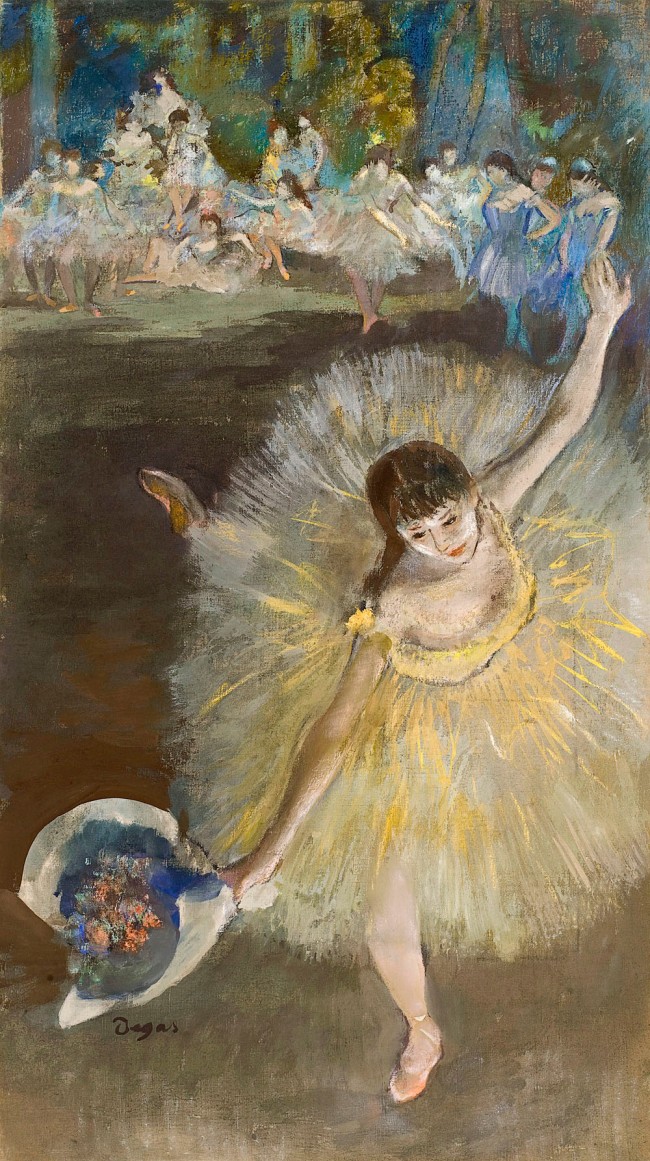
![Edgar Degas (French, 1834-1917) 'Danseuses, éventail [Dancers (Fan, design)]' (installation view) 1879 Edgar Degas (French, 1834-1917) 'Danseuses, éventail [Dancers (Fan, design)]' (installation view) 1879](https://artblart.com/wp-content/uploads/2016/08/installation-al.jpg)

![Edgar Degas (French, 1834-1917 'La Loge [Theatre box]' 1885 (installation view) Edgar Degas (French, 1834-1917 'La Loge [Theatre box]' 1885 (installation view)](https://artblart.com/wp-content/uploads/2016/09/installation-am.jpg)
![Edgar Degas (French, 1834-1917) 'La Loge [Theatre box]' 1880 (installation view) Edgar Degas (French, 1834-1917) 'La Loge [Theatre box]' 1880 (installation view)](https://artblart.com/wp-content/uploads/2016/09/installation-an.jpg)

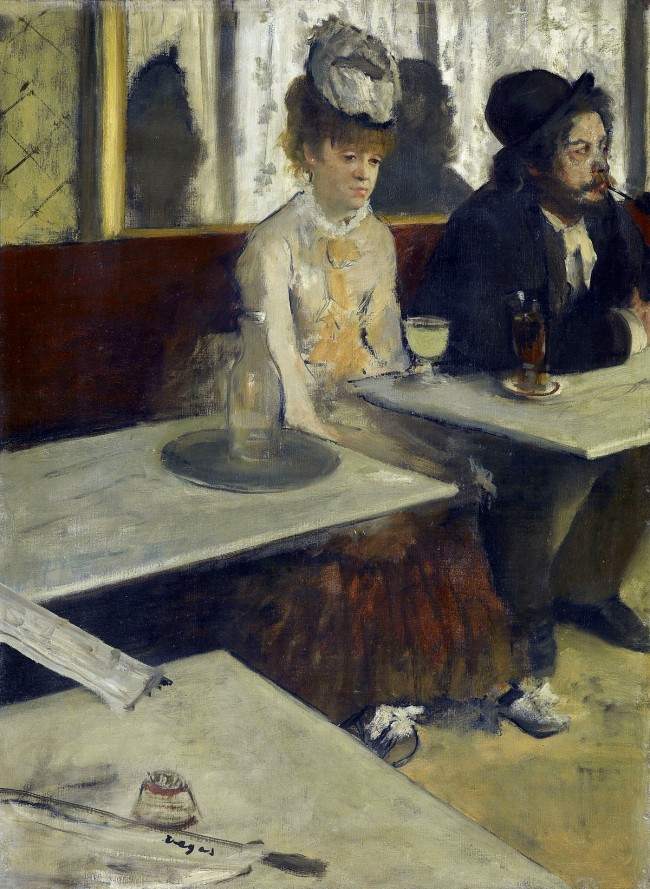
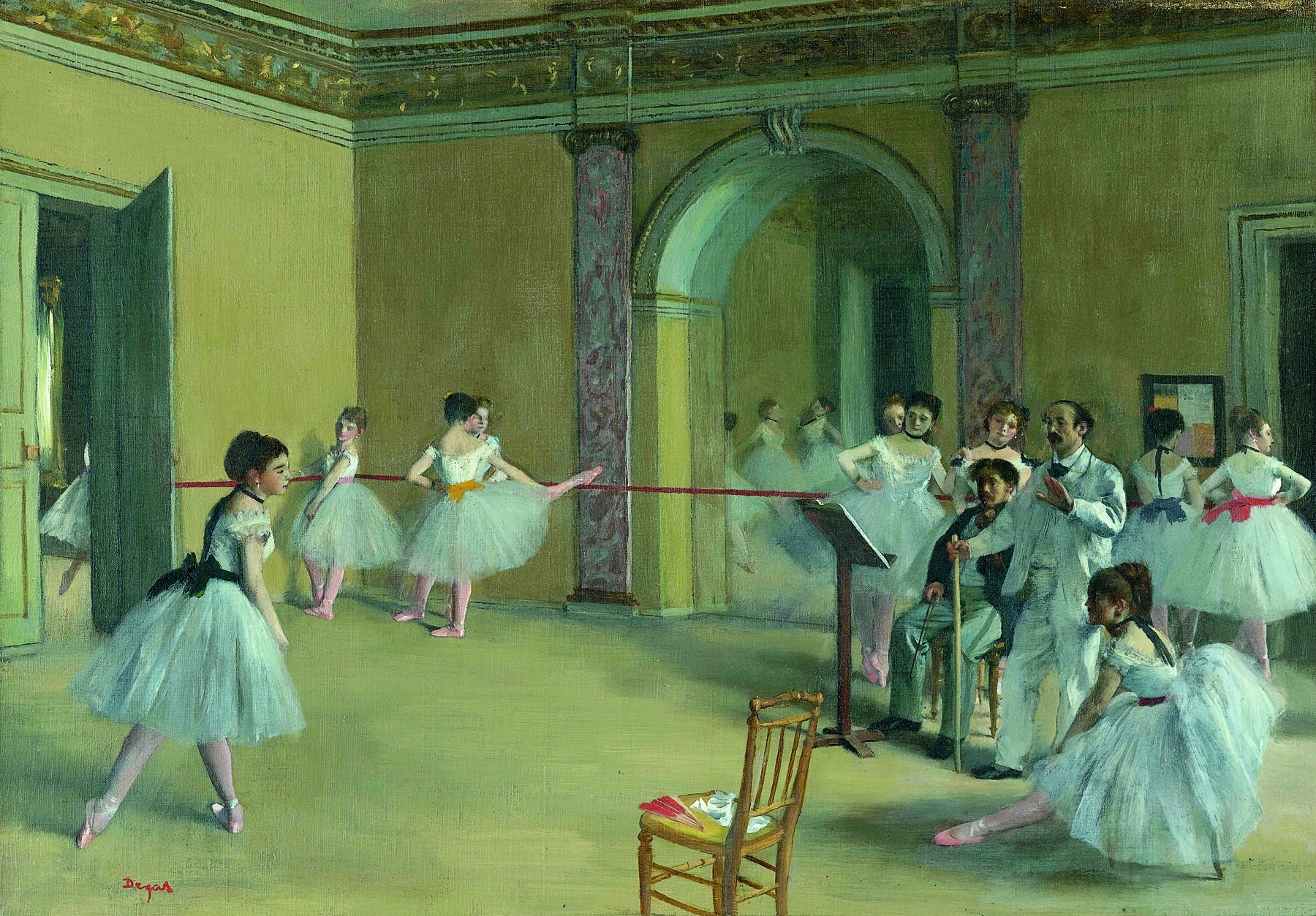












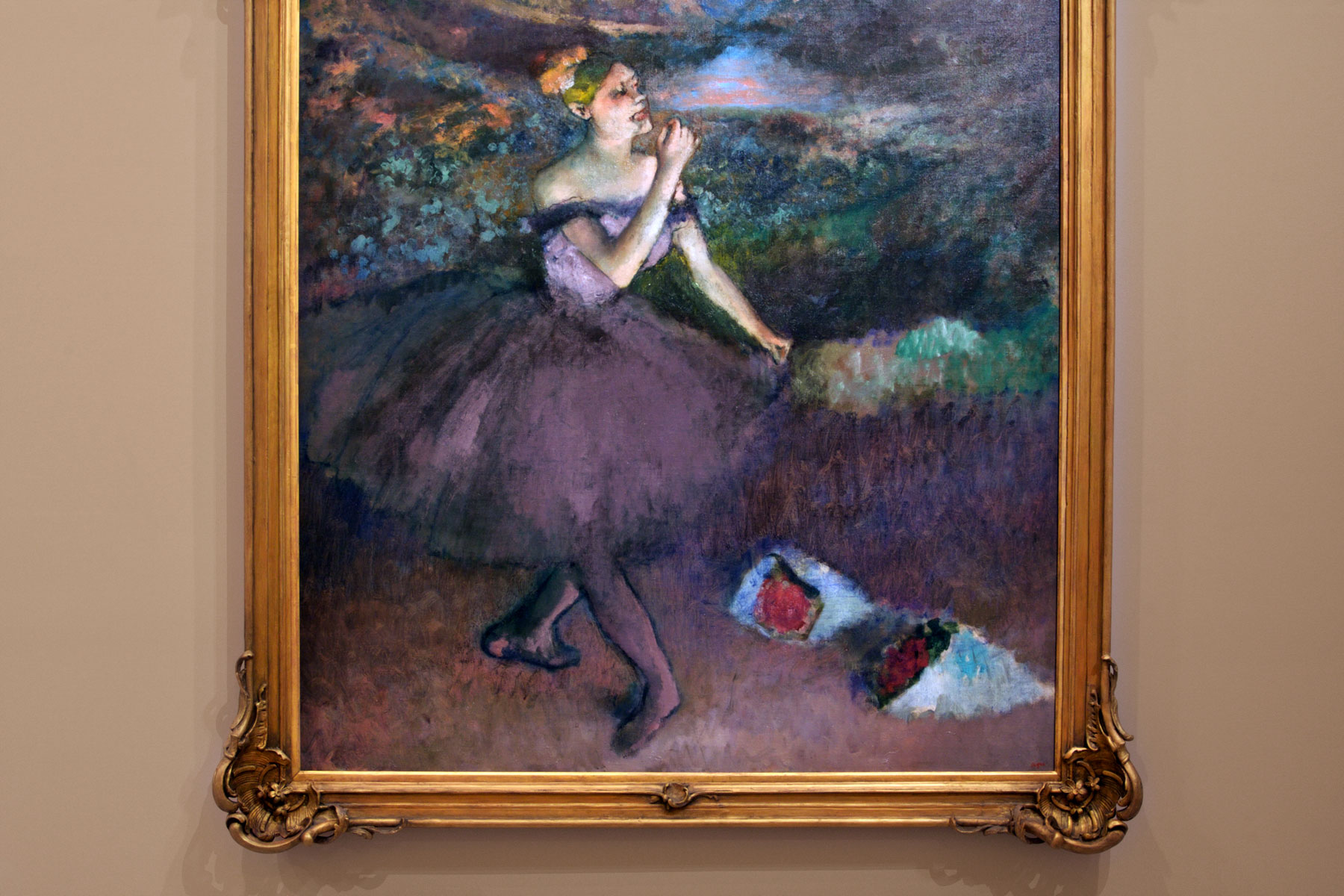


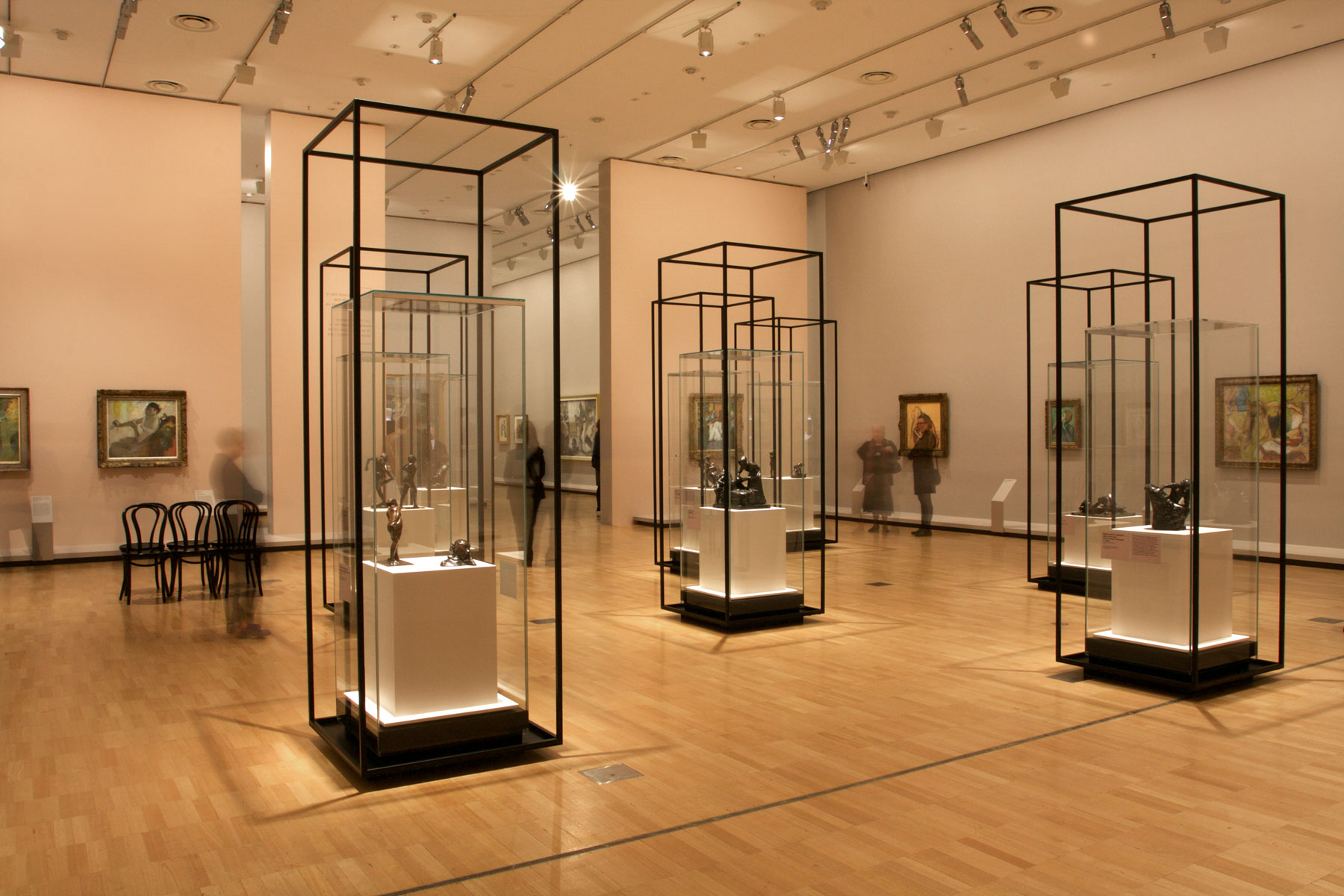



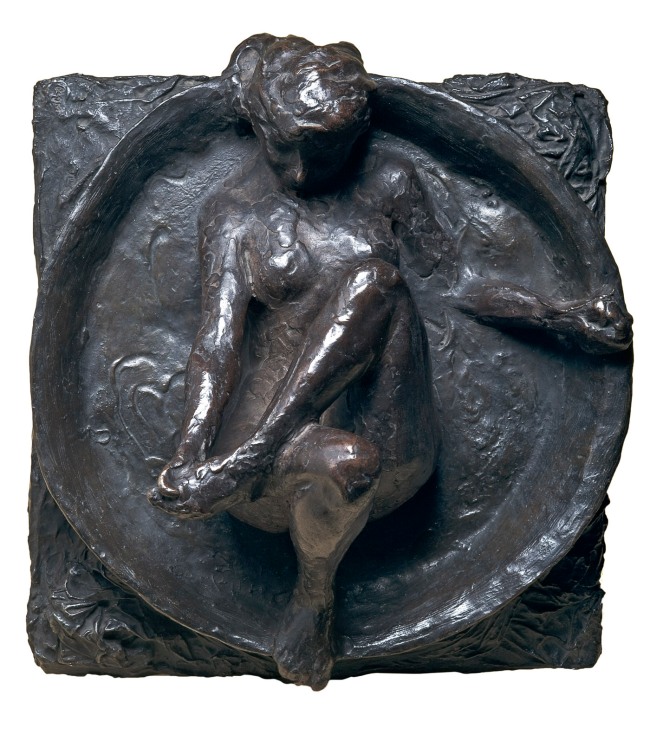
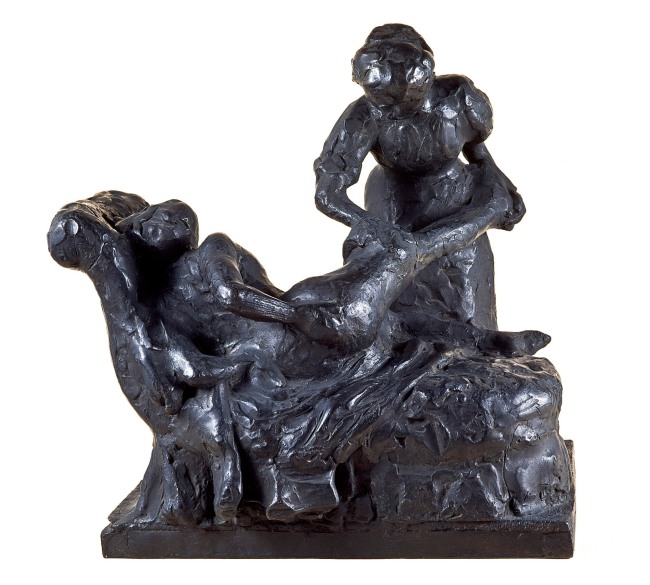
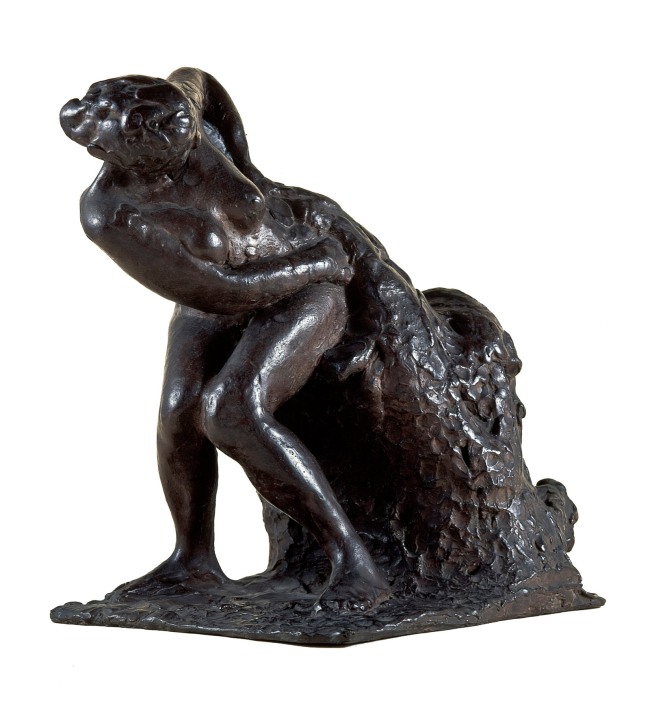
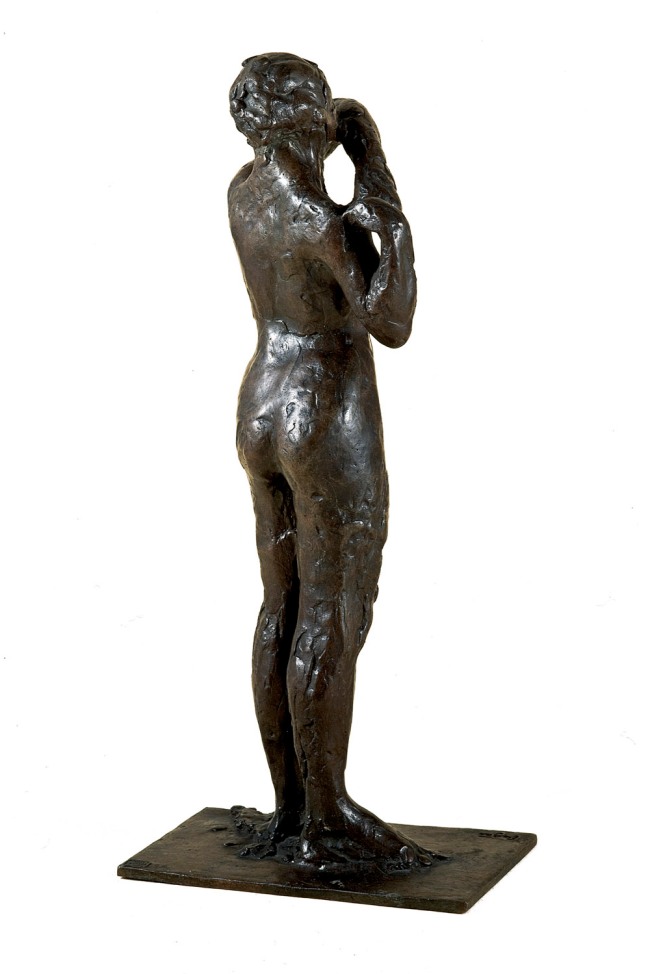
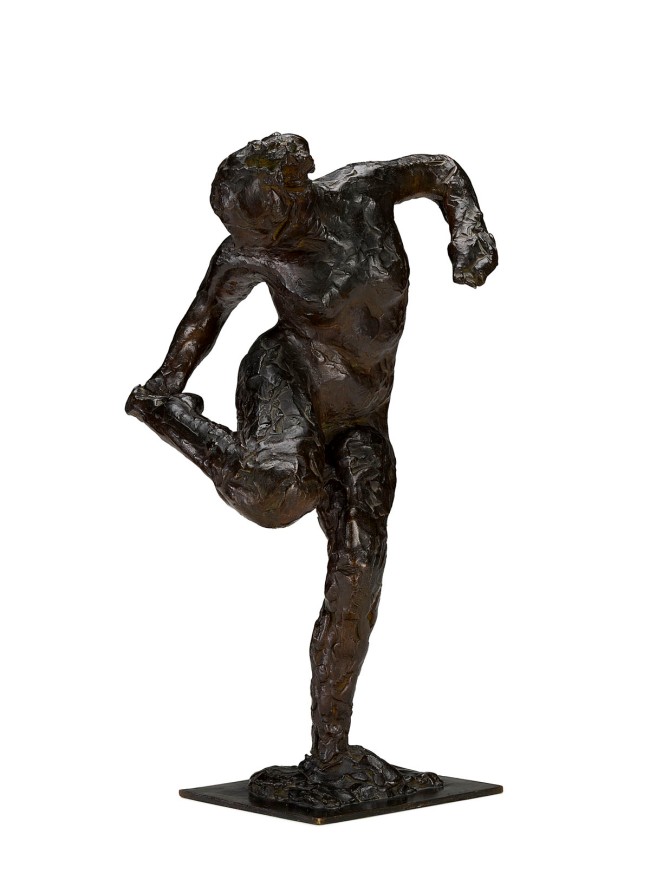



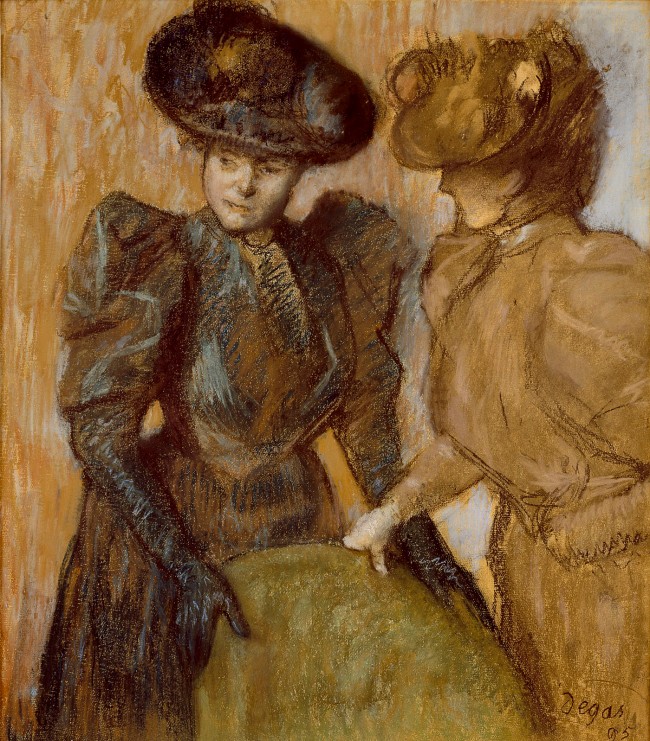

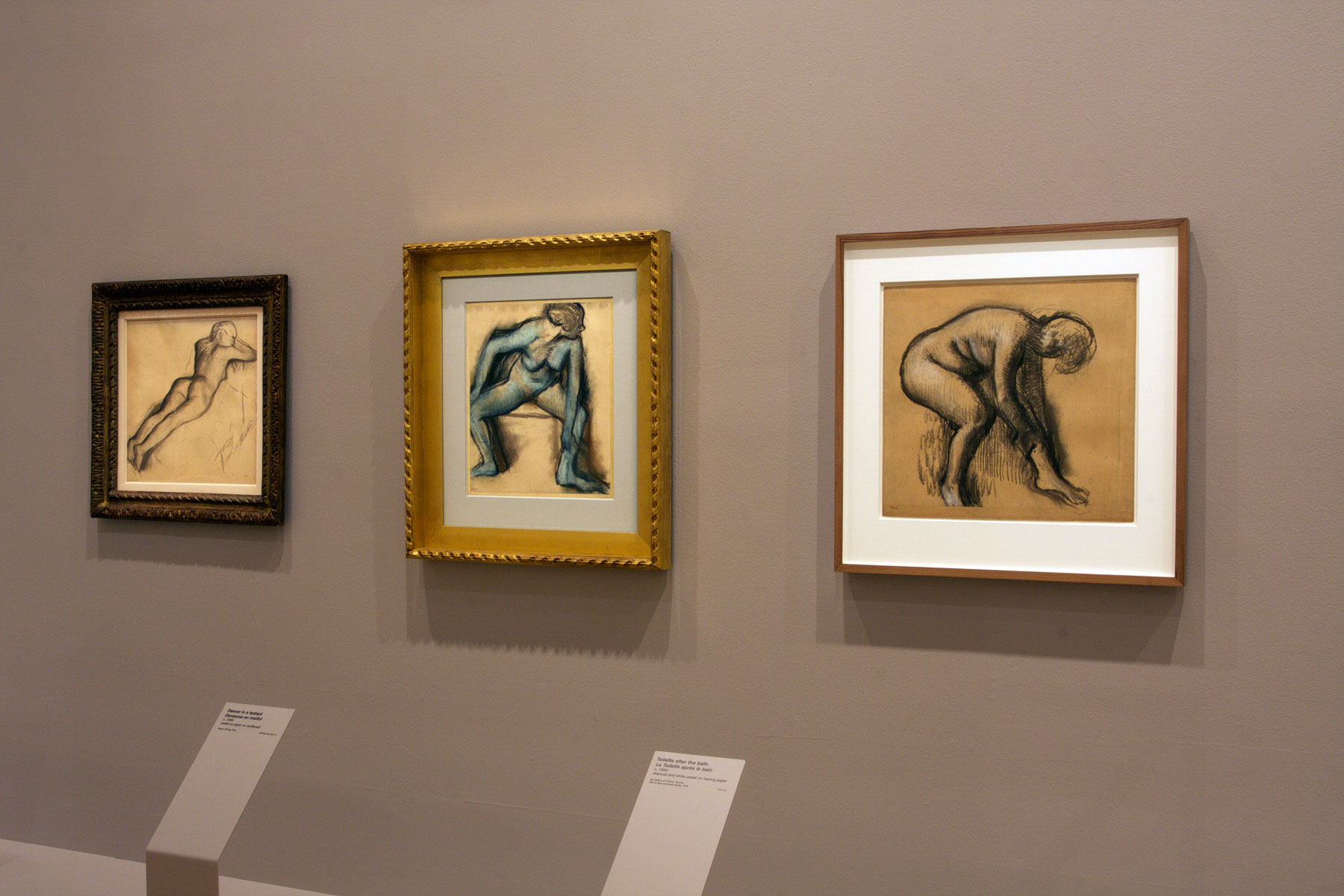
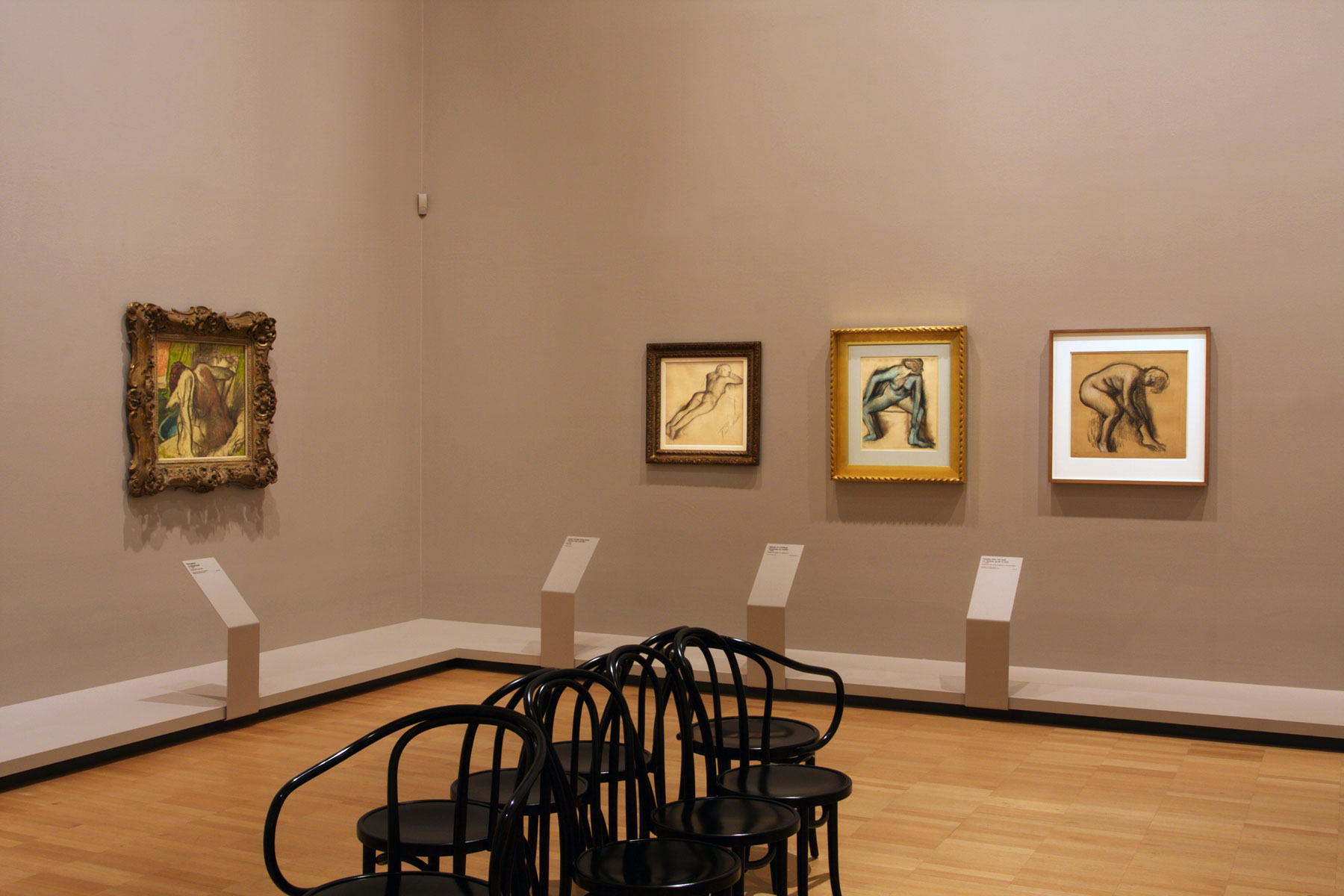

![Edgar Degas (French, 1834-1917) 'La Baigneuse [The bather]' c. 1895 Edgar Degas (French, 1834-1917) 'La Baigneuse [The bather]' c. 1895](https://artblart.com/wp-content/uploads/2016/09/installation-bp.jpg)
![Edgar Degas (French, 1834-1917) 'Femme a la toilette [Woman at he toilette] c. 1895-1900 (installation view) Edgar Degas (French, 1834-1917) 'Femme a la toilette [Woman at he toilette] c. 1895-1900 (installation view)](https://artblart.com/wp-content/uploads/2016/09/installation-bd.jpg)
![Edgar Degas (French, 1834-1917) 'Femme a la toilette [Woman at her toilette] c. 1894 (installation view) Edgar Degas (French, 1834-1917) 'Femme a la toilette [Woman at her toilette] c. 1894 (installation view)](https://artblart.com/wp-content/uploads/2016/09/installation-be.jpg)
![Edgar Degas (French, 1834-1917) 'Femme a la toilette [Woman at her toilette] c. 1894 Edgar Degas (French, 1834-1917) 'Femme a la toilette [Woman at her toilette] c. 1894](https://artblart.com/wp-content/uploads/2016/08/exhi036044-web.jpg)
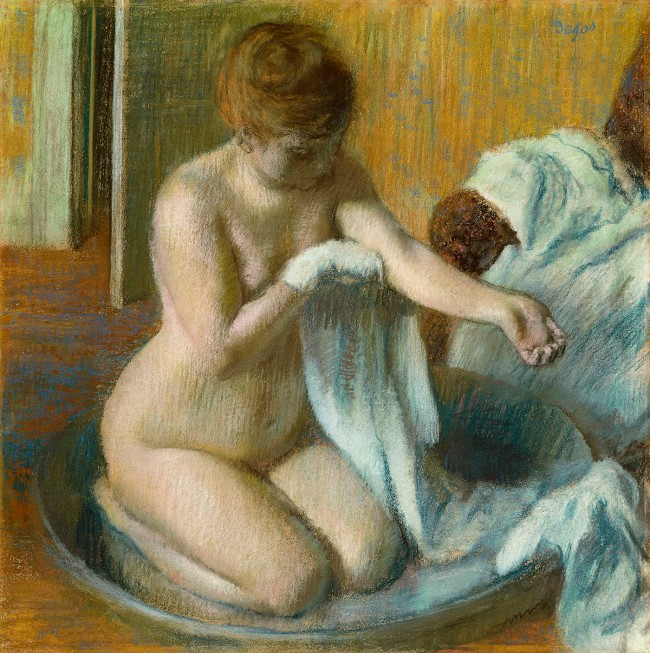

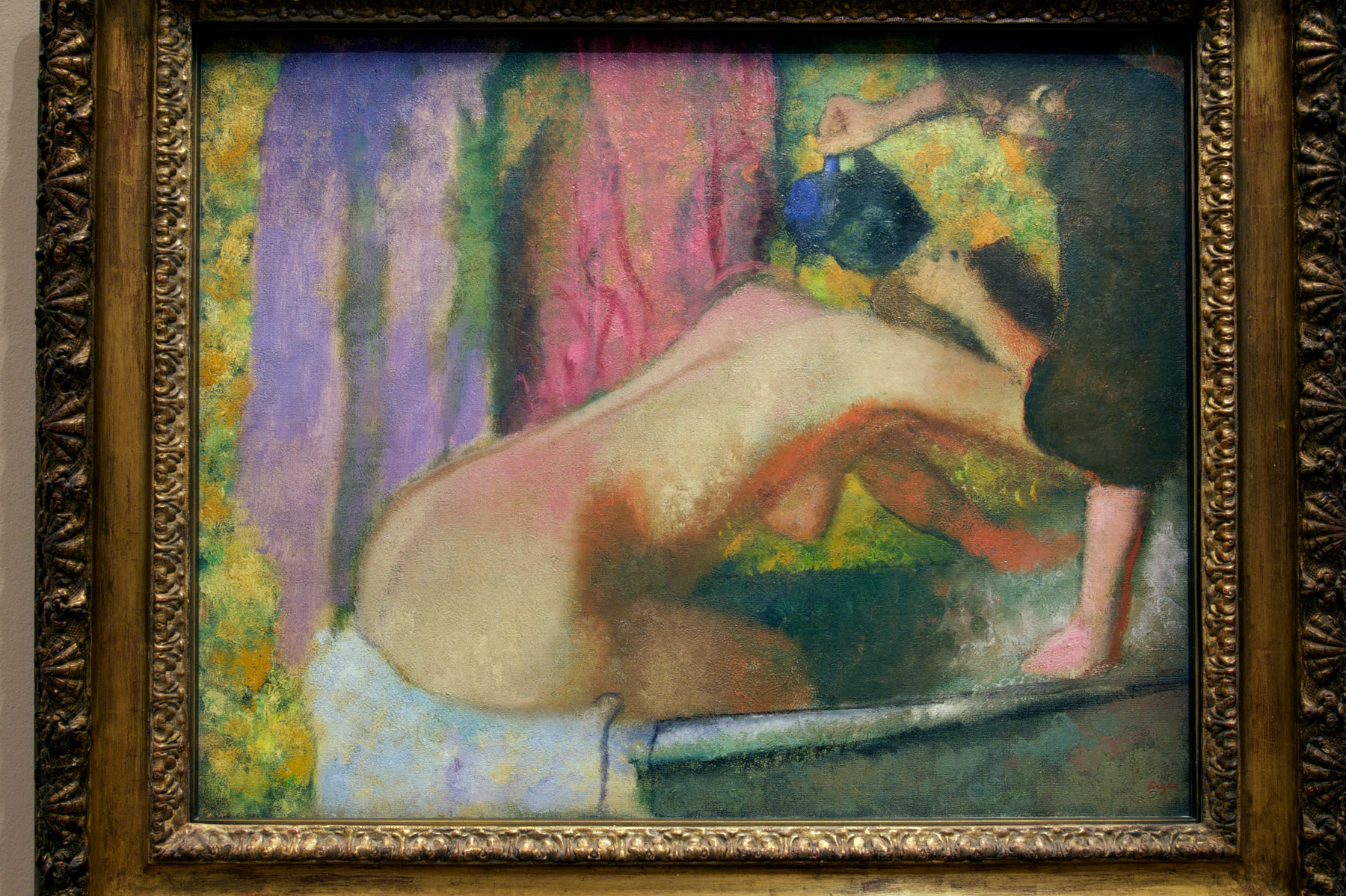


![Installation view of the exhibition 'Degas: A New Vision' at the National Gallery of Victoria International, Melbourne showing at right, 'Femme au Tub' [Nude woman drying herself] c. 1884-1886 Installation view of the exhibition 'Degas: A New Vision' at the National Gallery of Victoria International, Melbourne showing at right, 'Femme au Tub' [Nude woman drying herself] c. 1884-1886](https://artblart.com/wp-content/uploads/2016/09/installation-bh.jpg)
![Edgar Degas. 'Femme au Tub [Nude woman drying herself]' c. 1884-1886 (installation view) Edgar Degas. 'Femme au Tub [Nude woman drying herself]' c. 1884-1886 (installation view)](https://artblart.com/wp-content/uploads/2016/09/installation-bi.jpg)

![Edgar Degas (French, 1834-1917) 'Chevaux de courses [Racehorses]' c. 1895-1899 (installation view) Edgar Degas (French, 1834-1917) 'Chevaux de courses [Racehorses]' c. 1895-1899 (installation view)](https://artblart.com/wp-content/uploads/2016/09/installation-bf.jpg)
![Edgar Degas (French, 1834-1917) 'Chevaux de courses [Racehorses]' c. 1895-1899 Edgar Degas (French, 1834-1917) 'Chevaux de courses [Racehorses]' c. 1895-1899](https://artblart.com/wp-content/uploads/2016/08/exhi039831_web.jpg)





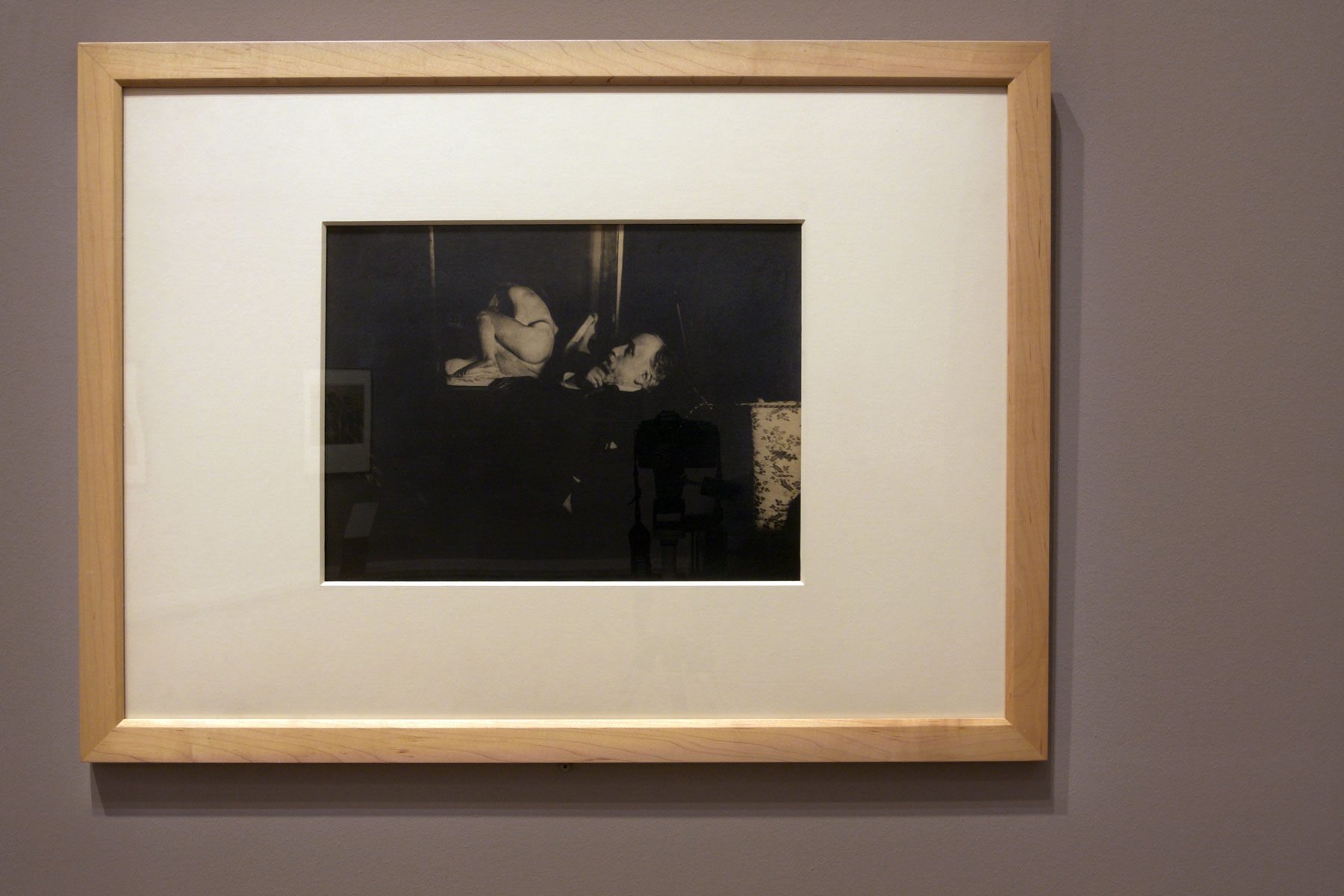
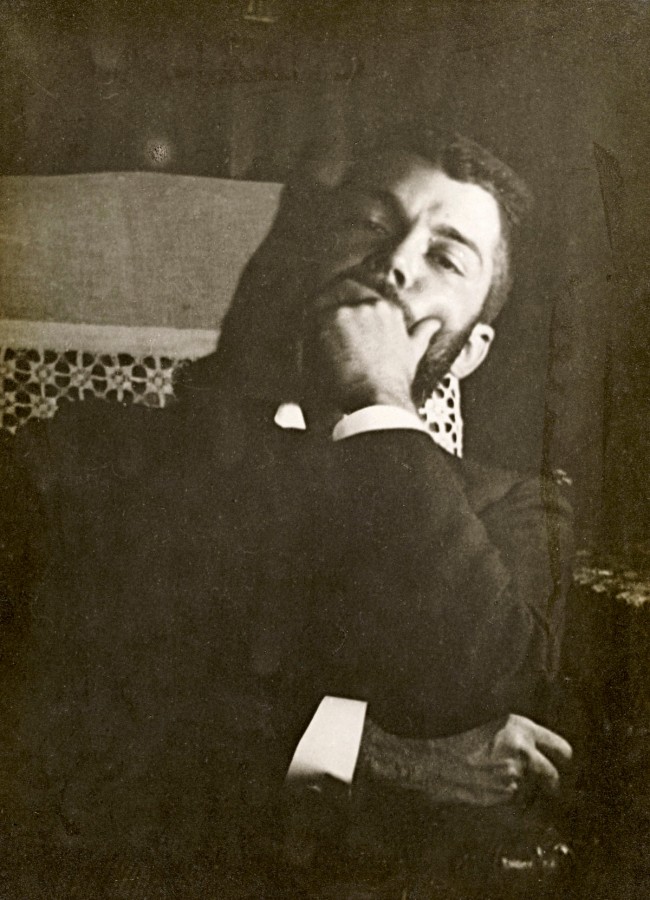
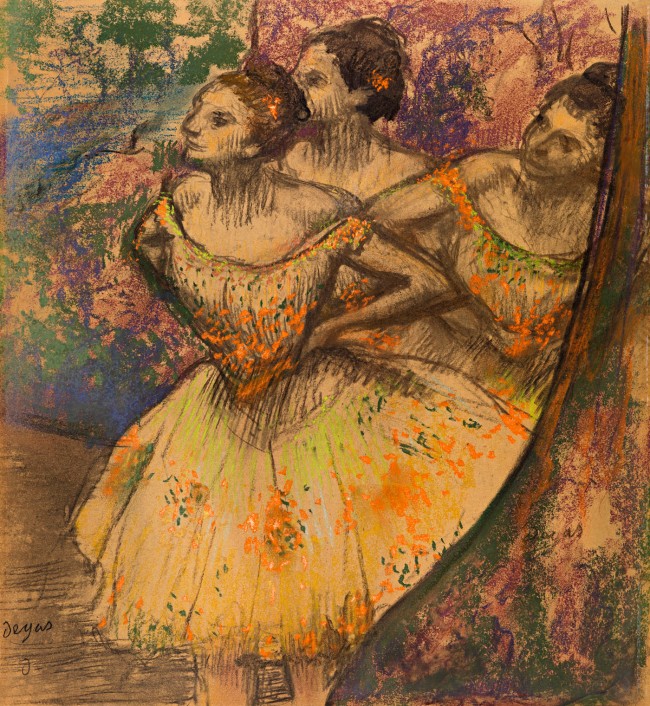
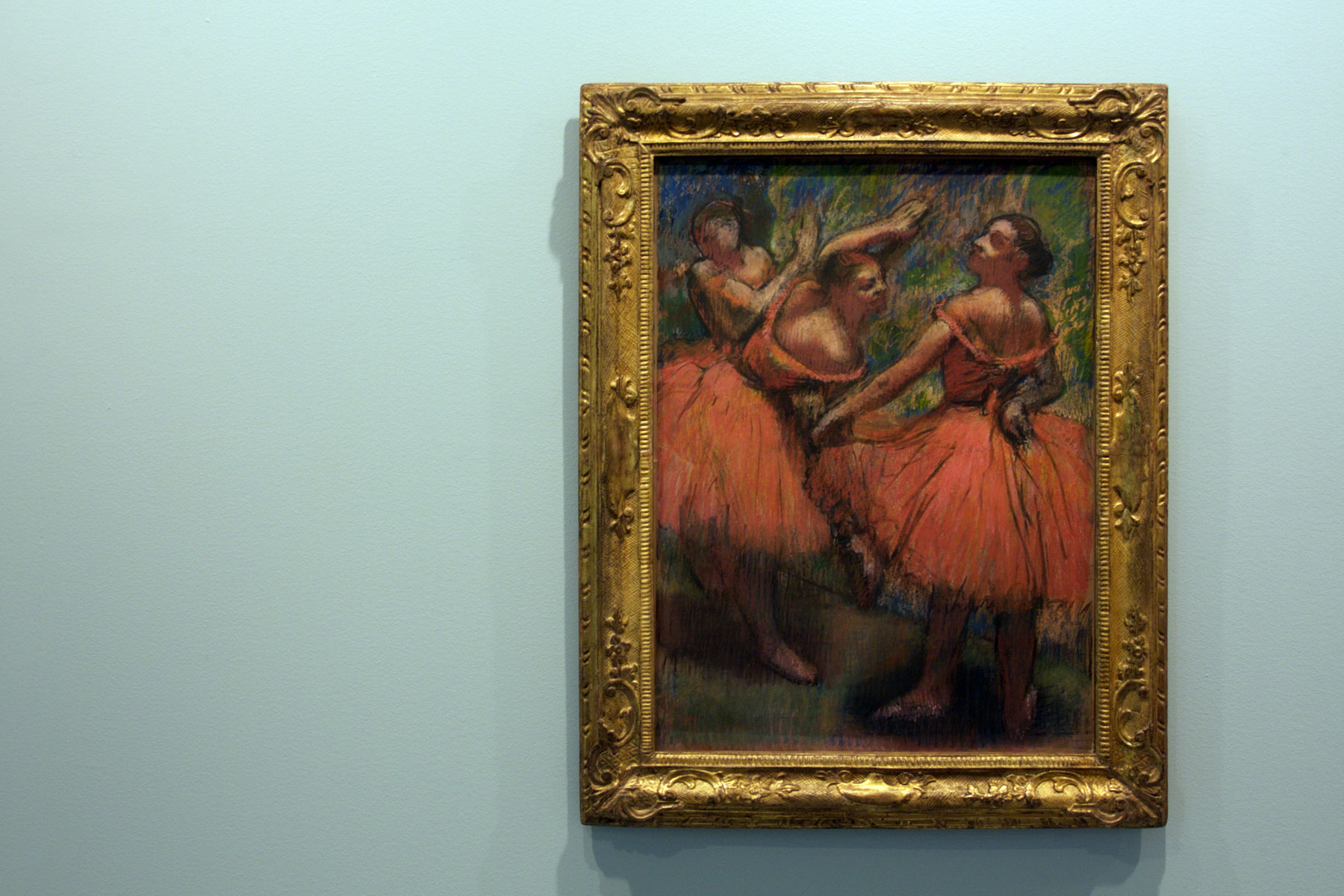



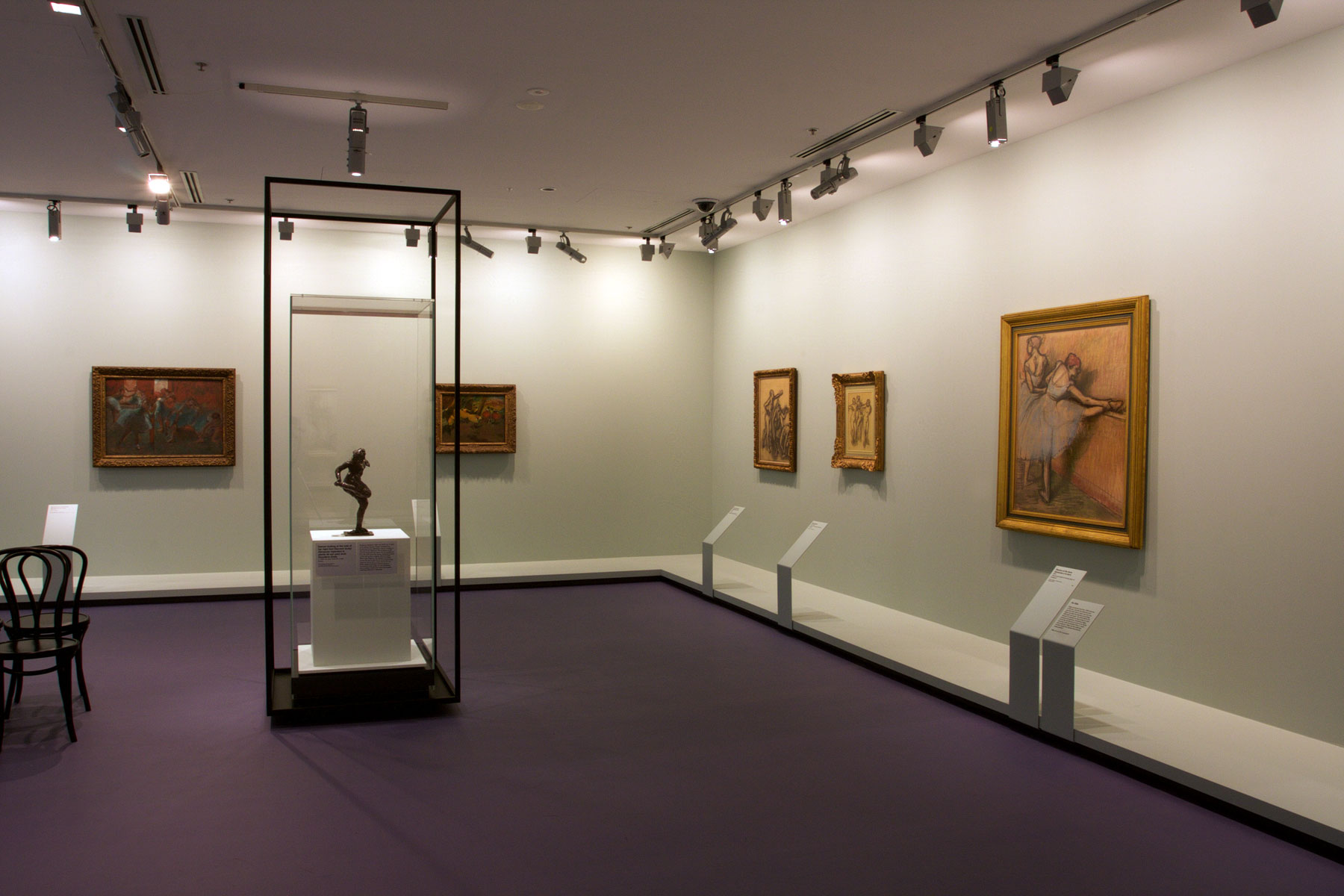
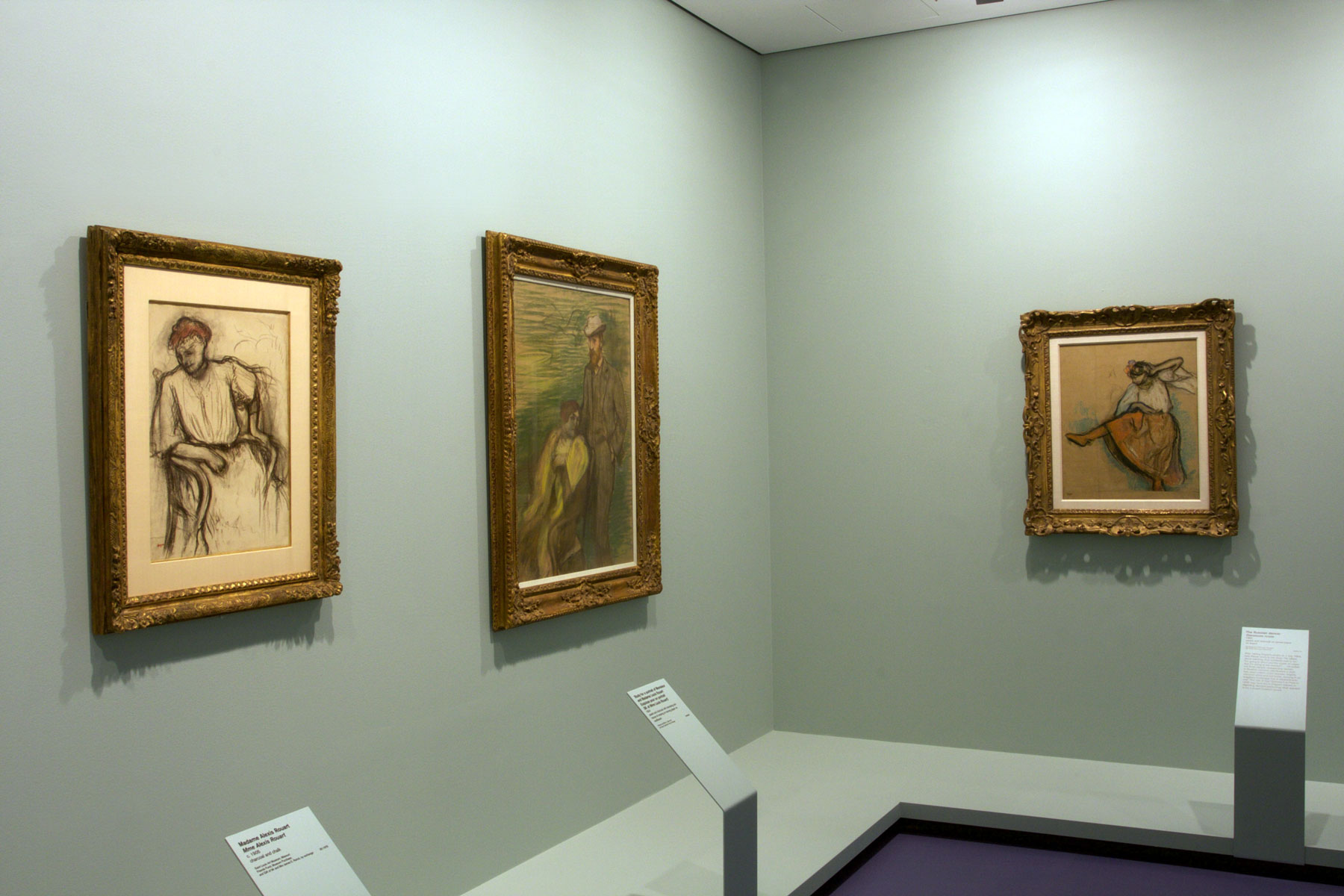

You must be logged in to post a comment.